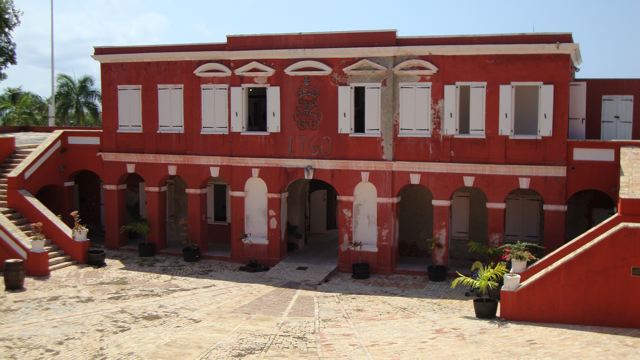 Cooled by early morning trade winds, we sunblocked, took an early morning walk on our condo’s north shore beach, then drove west through St. Croix’s rain forest (left-lane driving is significantly less stressful in daylight) to Frederiksted, population 830, the smaller of the island’s two towns. Built around Fort Frederik in the mid-18th century, the town was originally, and still is, just seven streets by seven streets…and we walked most of them, passing many locals (Crucians) and spotting only five possible tourists.
Cooled by early morning trade winds, we sunblocked, took an early morning walk on our condo’s north shore beach, then drove west through St. Croix’s rain forest (left-lane driving is significantly less stressful in daylight) to Frederiksted, population 830, the smaller of the island’s two towns. Built around Fort Frederik in the mid-18th century, the town was originally, and still is, just seven streets by seven streets…and we walked most of them, passing many locals (Crucians) and spotting only five possible tourists.
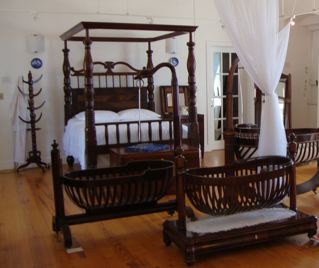 The fort, a U.S. National Historic Landmark, houses a rather modest museum. There is little to see other than the cannon’s view of the harbor, a few pre-Columbian Taino and Carib artifacts (Columbus landed on St. Croix in 1493), and a room of Caribbean mahogany furniture, including several cradles, a bed, chamber pot cabinets, a bidet, and a gentleman’s liquor box (see below). Preservation of historical and cultural artifacts was not a priority until relatively recently, so much of St. Croix’s past is only now being recaptured.
The fort, a U.S. National Historic Landmark, houses a rather modest museum. There is little to see other than the cannon’s view of the harbor, a few pre-Columbian Taino and Carib artifacts (Columbus landed on St. Croix in 1493), and a room of Caribbean mahogany furniture, including several cradles, a bed, chamber pot cabinets, a bidet, and a gentleman’s liquor box (see below). Preservation of historical and cultural artifacts was not a priority until relatively recently, so much of St. Croix’s past is only now being recaptured.
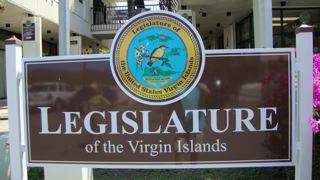 As we exited the fort and passed by the territorial legislature building, we heard a paradiddle, turned a corner, and watched what was probably the entire student body of St. Patrick School drilling in preparation for this weekend’s patron saint parade.
As we exited the fort and passed by the territorial legislature building, we heard a paradiddle, turned a corner, and watched what was probably the entire student body of St. Patrick School drilling in preparation for this weekend’s patron saint parade.
Frederiksted is the site of the 1848 uprising that ended slavery on St. Croix. Accordingly, Saint Patrick is honored by Crucian Catholics because he, a Romano-Briton, was captured by Irish raiders in the 5th century and enslaved in Ireland for six years before escaping, taking holy orders, and returning to Ireland as a missionary.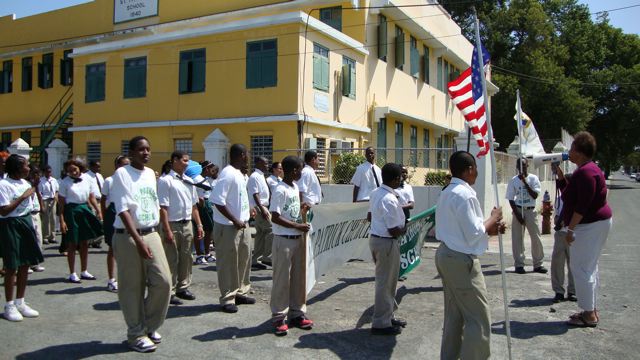 Lunch was charming. We ate at Polly’s at the Pier, an almost-year-old, organic, nearly vegetarian eatery run by partners Steven Schawl and Seth Wilcoxon, transplanted Midwesterners, now committed to St. Croix.
Lunch was charming. We ate at Polly’s at the Pier, an almost-year-old, organic, nearly vegetarian eatery run by partners Steven Schawl and Seth Wilcoxon, transplanted Midwesterners, now committed to St. Croix.
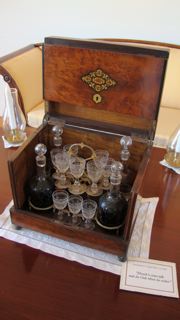 Steven and Seth (“I was an interior designer…Seth’s the one with food service experience”) have combined their addiction to top-quality coffee with a “funky Caribbean” atmosphere, strictly fresh and almost all locally grown ingredients (they host a weekly “pick up your produce” gathering in their patio), and internet access…and theirs is a superior location directly across from the pier where cruise ships dock.
Steven and Seth (“I was an interior designer…Seth’s the one with food service experience”) have combined their addiction to top-quality coffee with a “funky Caribbean” atmosphere, strictly fresh and almost all locally grown ingredients (they host a weekly “pick up your produce” gathering in their patio), and internet access…and theirs is a superior location directly across from the pier where cruise ships dock.
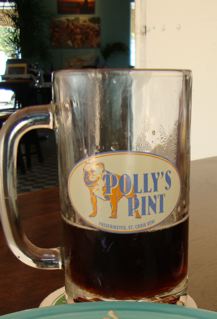 They have a full bar, but I was most intrigued by their beer. They call it micro-brewed, but nano-, pico- or even femto- would be more accurate. They brew in five-gallon batches, exactly what I do at home. Their signature is Polly’s Pale Ale, but I sampled their Bock: excellent…brown-eyed, not over-hopped, with notes of cassis, piñon, and Abba-Zaba.
They have a full bar, but I was most intrigued by their beer. They call it micro-brewed, but nano-, pico- or even femto- would be more accurate. They brew in five-gallon batches, exactly what I do at home. Their signature is Polly’s Pale Ale, but I sampled their Bock: excellent…brown-eyed, not over-hopped, with notes of cassis, piñon, and Abba-Zaba.


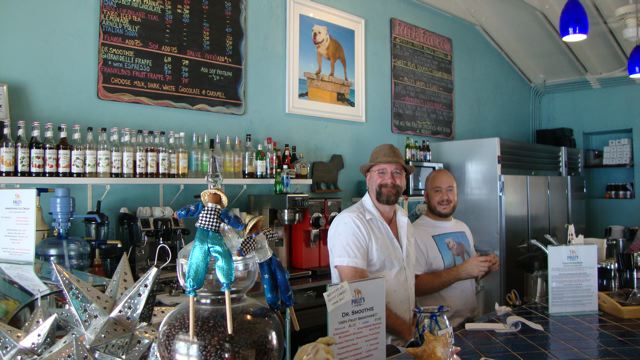




One Comment on “St. Croix–Frederiksted”
It was great seeing you guys and having you visit Polly’s! Hope to have you both in to see us again while you’re here!
Steven Schawl
Comments are closed.